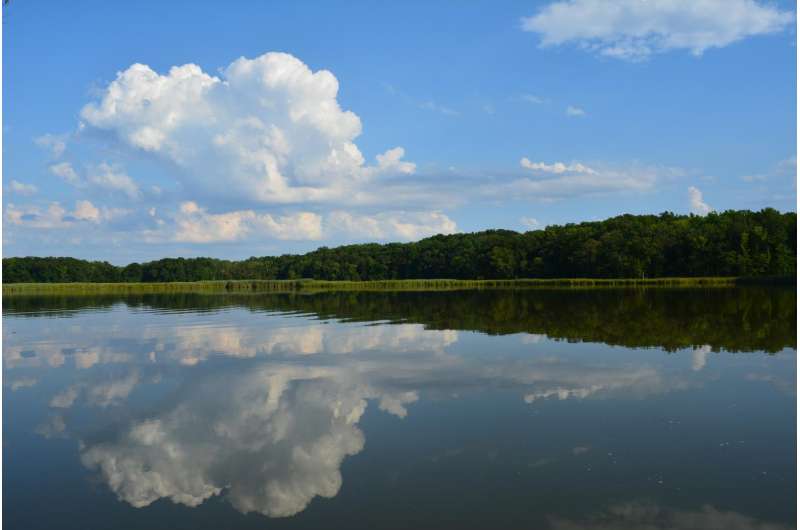This article has been reviewed according to Science X's editorial process and policies. Editors have highlighted the following attributes while ensuring the content's credibility:
fact-checked
reputable news agency
proofread
Oysters in the Chesapeake Bay are on the rebound: New report says they can help fight climate change

A new report from the Chesapeake Bay Foundation says efforts to restore oyster populations could have benefits beyond just survival of the species.
The report outlines strategies for reaping the most benefits from oyster restoration. Allison Colden, Maryland executive director for the foundation, said oysters are "a powerful tool" to mitigate and adapt to climate change and its challenges.
"The bay is woven into the fabric of our everyday lives—from casual conversation over crab feasts to those who make their living working on the water each and every day," Colden said. "The social, cultural and economic benefits of the bay are increasingly at risk from the threats of climate change, increased precipitation, storm intensity and sea-level rise, threaten homes and critical infrastructure.
"Sunny-day or nuisance flooding renders our roads impassable, cutting off businesses and emergency services. Shoreline properties are eroding at increasing rates as well as increasing temperatures challenging the electrical grid on our summer's hottest days."
According to the report, furthering restoration of oysters would help coastal communities vulnerable to sea-level rise. Specifically, living shorelines that include oyster shell reefs are a natural approach to protecting them from erosion. Healthy oyster reefs can also help protect the habitats that capture and store carbon.
The report states that strong policies reduce shoreline hardening and incorporating oyster habitat can re-create "continuous, interconnected natural systems" that protect coastal areas against storms and erosion. Currently, the foundation estimates roughly 14% of Chesapeake Bay shorelines in Maryland and 11% in Virginia are considered "hardened," by using shoreline protections such as bulkheads and revetments.
Doing so will also provide additional benefits for other coastal species, habitats and economies, the report continues. Oysters also filter sediment and algae from the water, the report states, increasing the clarity that is needed for Chesapeake Bay vegetation to receive enough sunlight. At the same time, they deposit nutrient-rich organic matter on the bottom that supports growth.
"We want to make sure that with the scientific tools we have available now, we can manage the oyster population to increase our harvest to levels that actually are sustainable in the future and not be in a situation where we follow good reproduction with unsustainable harvest, and therefore (oysters) experience drops in populations," said Chris Moore, CBF director for Virginia.
"We've all seen how exciting the increase of oyster harvested in the last couple of years is. But we want to make sure that remains in an upward trajectory and, like I say, not somewhat of a bust cycle like we've seen over the last 20–25 years or so."
The report also outlines transparency and accountability recommendations for states along the bay. In Virginia, the foundation recommends better accounting and data-sharing about how many oyster-lease acres there are, and allowing the public to participate in recommending how oyster fisheries operate.
Currently, the foundation reports that under the 2014 Chesapeake Bay Watershed Agreement, federal-state efforts are on track to fully restore 11 Chesapeake Bay tributaries for oyster habitat by 2025. Don Boesch, president emeritus for the University of Maryland Center for Environmental Science, said reaching the full potential for oysters' involvement in resiliency.
"We can celebrate that and accept that as a success, but this accomplishment should be seen just as the beginning not the end, for recovery of the bay's oyster population," Boesch said.
"We must continue to get an even smarter way, learning from what we've been able to do (and) building on what we've learned, to take the next steps recommended in this report by CBF in a way that is now also aligned with mitigating and adapting to climate change. While bold, these recommendations are entirely feasible in my opinion."
2024 The Virginian-Pilot. Distributed by Tribune Content Agency, LLC.




















